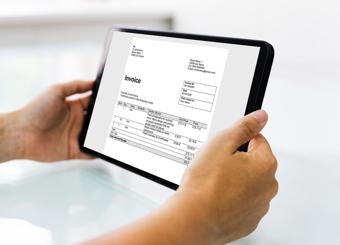Emerging technology that can change the way procurement works
Recent reports suggest that the Augmented Reality (AR), Virtual Reality (VR) and Artificial Intelligence (AI) market is estimated to be worth $184.66 billion in 2026, representing a Compound Annual Growth Rate of nearly 50%. These types of emerging technologies are already simplifying people’s lives. Gadgets like Amazon Echo or Google Home are helping people with their day-to-day tasks and the potential for business application could be a game changer for many organizations.
Procurement is one of the most obvious functions that could harness this new technology and reap the obvious cost- and time-saving benefits. Here are some examples of how procurement could use emerging technology in its daily tasks.
Augmented Reality and Virtual Reality
Every supplier has warehouses and stockrooms full of the items they sell. Imagine being able to provide your customers with a window into those stockrooms. AR and VR technology enables them to experience the environment as if they were physically there, exploring products in detail before making any buying decisions - all remotely from the comfort of their computer or mobile device.
Potential buyer mis-ordering is a common, fairly unavoidable issue that arises when customers order new goods from catalogs , even from the better catalogs with clear product images and full descriptions; the buyer may only realize their oversight at the point of delivery. Virtual stockrooms can minimize this risk, allowing the buyer to inspect and examine the product much more closely before a purchase decision. The upsides for procurement here are clear, reducing time wasted on processing returns and refunds.
Artificial Intelligence
AI can play a very useful role in spend reporting. We’ve all endured the hassle of searching through numerous documents to determine the information we need for a meeting or a report. And even when spend reporting systems are in place to provide information more readily, scenarios arise where key spend data is needed at the last minute and the reporting tool itself is the barrier to getting fast figures at your fingertips. What if you could ask your computer or your mobile device how much was being spent on a product category, by a business department in a specific period, by simply asking it with a voice command? AI has the potential to interact with purchasing systems to give the user that level of convenience.
Sourcing is another area in which AI technology could make a difference. Procurement teams are often tasked with finding new suppliers at short notice, for a wide variety of goods and services, and often with complex criteria for consideration. While sourcing software can drastically reduce the time and effort required to find the right supplier, AI can analyze numerous suppliers at once and make recommendations about which suppliers to approach. And with the right data AI can not only compress sourcing timelines, but the onboarding and purchasing processes as well.
AI can also be used to help your organization better manage supplier relationships, ensuring that invoices are ready to be paid on time, based on their specific payment terms. AI can be used, based on previous data patterns and set parameters, to ‘supervise’ how actions are carried out, ensuring they’re done so in line with an organization’s buying policies and guidelines, minimizing errors within the purchasing cycle and subsequent non-payment risks.
Emerging technology is revolutionizing the way organizations operate, and it looks like more change is ahead with the likes of AR and AI. Some businesses, and some business functions, may struggle to see the potential value to them in their world, but those in procurement who can apply it to their processes will surely help their business gain a welcome competitive advantage.






